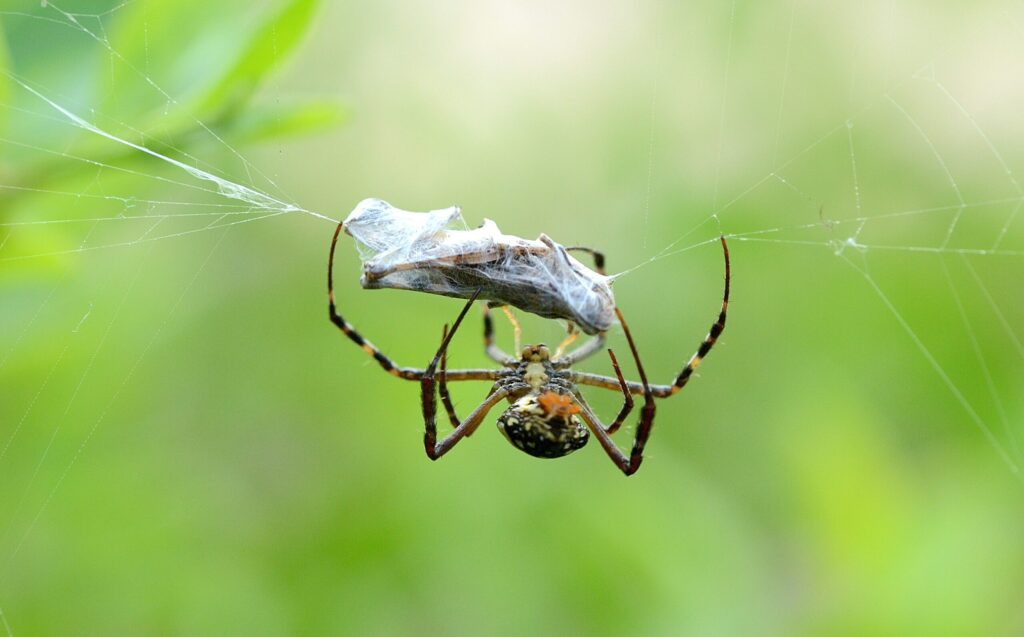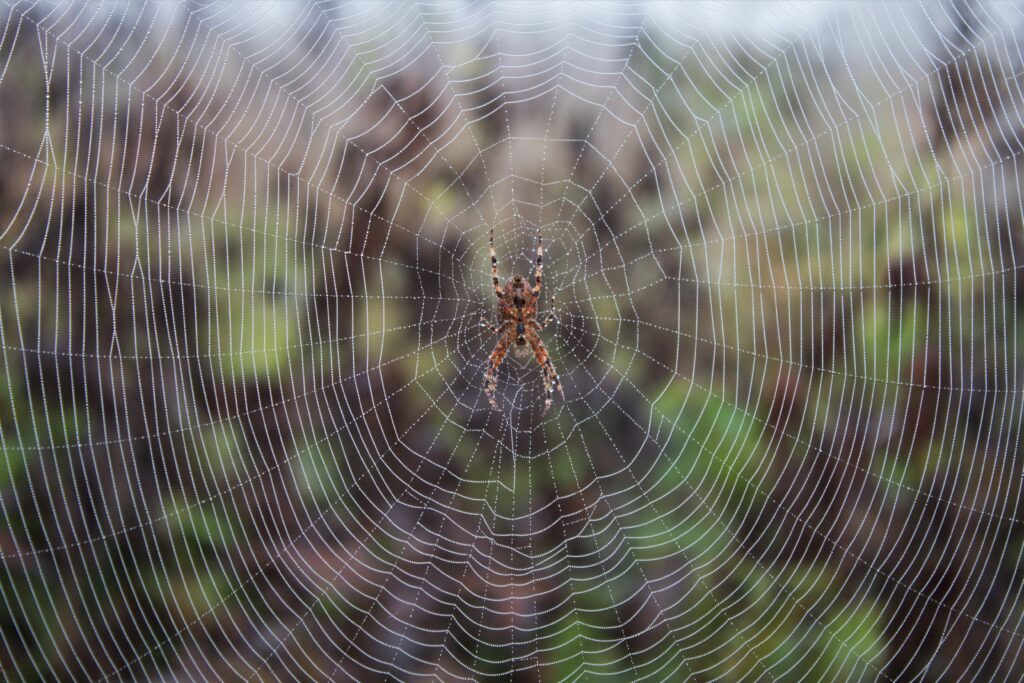 Embrace the Eight-Legged Squad: They’ll Tackle Pests and Leave You Amused
Embrace the Eight-Legged Squad: They’ll Tackle Pests and Leave You Amused
Welcome to the world of spiders (also known as arachnids)—a diverse and intriguing group of arachnids that often evoke mixed emotions among humans. While some may shudder at the mere thought of these eight-legged creatures crawling through their homes, there are compelling reasons why we should consider embracing them as beneficial residents.
Far beyond their eerie reputation, these remarkable creatures serve as nature’s skilled pest controllers, diligently weaving webs of cleanliness and fostering a deeper understanding of the intricate web of life.
Why having them as cohabitants can be a boon rather than a bane, shedding light on their remarkable contributions to our ecosystem and the potential for more harmonious coexistence.
Embracing arachnids in our homes might not be everyone’s cup of tea, but they do provide several benefits that can help us appreciate their presence.
Here’s a list of reasons why we should consider welcoming spiders into our living spaces:
- Natural pest control: They are excellent predators that feed on insects and other pests like flies, mosquitoes, cockroaches, and moths. Allowing spiders to live in our homes help keep the population of these unwanted pests in check, reducing the need for chemical insecticides.

- Non-toxic pest management: Unlike chemical pesticides, arachnids do not use toxic substances to eliminate pests. Their pest control method is a natural and eco-friendly way to maintain a balanced ecosystem indoors.
- Low maintenance: Spiders don’t require any care or feeding from us. They are self-sufficient and can find their food in our homes.
- Free extermination service: Rather than hiring expensive pest control services, having these pest-controllers around means benefiting from a free and ongoing pest control system.
- Web building helps with cleanliness: Arachnids spin webs to catch their prey, which can help trap dust particles and other allergens, leading to cleaner air quality in our homes.
- Fascinating behavior: Observing spiders can be intriguing and educational, especially for children. Learning about spider species, their habits, and hunting techniques can foster an appreciation for the natural world.

- Aesthetic appeal: Some spiders, like the orb-weavers, create beautiful, intricate webs that can add an artistic touch to the corners of our homes.
- Nocturnal hunters: Spiders are primarily active during the night, so they do their pest control work when we are asleep, reducing potential encounters.
- Symbol of patience and creativity: Spiders symbolize patience, persistence, and creativity in various cultures and folklore, which can add a positive connotation to their presence.
- Part of the ecosystem: Spiders are an essential part of the local ecosystem, and by allowing them to exist in our homes, we contribute to the biodiversity and balance of the environment.

- Conservation of species: Many spider species face threats due to habitat destruction and environmental changes. By allowing spiders to thrive in our homes, we provide them with a safe and stable environment where they can live and reproduce. This, in turn, can contribute to the conservation of certain spider species, helping to maintain the biodiversity of the local ecosystem. Small actions like giving spiders a place in our homes can play a part in preserving these valuable creatures for future generations.
TIP: It’s important to note that while most house spiders are harmless to humans, some can be venomous. If you’re uncomfortable having spiders around or living in an area with potentially dangerous species, taking proper precautions or seeking professional help to manage their presence safely is essential.
Did you know?
Some species of spiders exhibit a unique and fascinating behavior called “ballooning.” Ballooning is a method of dispersal that young spiderlings use to travel through the air and find new territories. When spiderlings are ready to leave their birthplace and seek new habitats, they climb to an elevated point, such as the top of a plant or a tree, and release a silk thread into the air. This silk acts like a parachute, catching the wind and carrying the spiderlings aloft.
 Ballooning allows these tiny arachnids to travel long distances, sometimes hundreds of miles, across oceans and even to remote islands. Researchers have found spiderlings at heights of over two miles in the atmosphere, meaning air currents can carry them to diverse and distant locations.
Ballooning allows these tiny arachnids to travel long distances, sometimes hundreds of miles, across oceans and even to remote islands. Researchers have found spiderlings at heights of over two miles in the atmosphere, meaning air currents can carry them to diverse and distant locations.
This extraordinary behavior helps spiders colonize new areas, adapt to changing environments, and maintain genetic diversity within their populations.
It’s a remarkable feat of nature and showcases these often misunderstood creatures’ incredible adaptability and survival strategies.
A little history:
Spider history dates back hundreds of millions of years, making them one of the oldest groups of terrestrial organisms on Earth.
Here are some key points in spider history:
- Fossil evidence: The earliest direct evidence of spiders comes from the Devonian period, around 380 million years ago. These ancient spiders were quite different from modern species and were primarily aquatic, living near the edges of lakes and rivers.
- The emergence of modern spiders: Around 300 million years ago, spiders began to transition from aquatic to terrestrial habitats during the Carboniferous period. This led to the development of various adaptations that allowed them to thrive on land.

- Silk production: Spiders started producing silk around 300 million years ago. Silk was used primarily for creating protective egg cases and lining retreats. Over time, spiders evolved to use silk for hunting and building webs to catch prey.
- Dinosaurs and spiders: Spiders coexisted with dinosaurs during the Mesozoic era, which lasted from about 250 to 66 million years ago. They shared the planet with these giant reptiles, adapting to various ecosystems and evolving alongside other organisms.
- Evolution of diverse species: As time progressed, spiders diversified into various species. Today, there are over 48,000 recognized arachnid species, and scientists estimate that there could be many more yet to be discovered.
- Cultural significance: Throughout history, they have held cultural significance in various societies. They are often depicted in myths, folklore, and art. Spiders symbolize creativity, patience, and even the cycle of life and death in some cultures.
- Ancient spider silk: In 2008, researchers discovered a fossilized arachnid in amber that dates back to the Early Cretaceous period, approximately 110 million years ago. What was remarkable about this find was that the spider’s dragline silk was also preserved in the amber, providing insights into the structure of ancient spider silk.

- Taxonomy: The study of these creatures and their classification (taxonomy) has a long history. Swedish naturalist Carl Linnaeus, the father of modern taxonomy, included spiders in his seminal work “Systema Naturae” in 1758.
- Modern research: In recent years, advances in technology and scientific research have deepened our understanding of various species. We’ve learned more about their behavior, communication, venom, and silk, leading to potential applications in medicine, engineering, and materials science.
Spiders have stood the test of time and continue to play a crucial role in ecosystems worldwide. Their ancient history and fascinating adaptations make them a captivating subject for scientific study and human curiosity.


